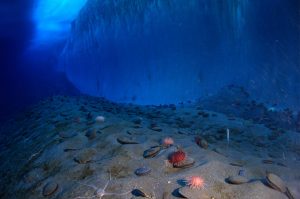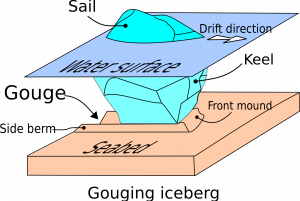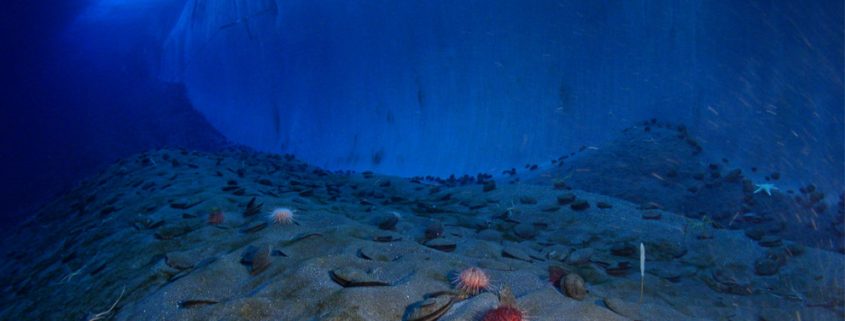The Importance of Deep-Water Coral on the Antarctic Continental Shelf
By Sianna Raquel Vacca, SRC Intern
Throughout history, both natural and man-made causes have resulted in long-lasting effects on the oceans. While most organic processes yield gradual change, the impact of human activity alters nature by prompting and accelerating otherwise irregular events (e.g. rapid ocean acidification, warming, habitat destruction), diminishing the oceans’ supply of pristine areas and ecosystems. A “pristine ecosystem” is defined as an area that has been either minimally affected or entirely untouched by human activity/influence. The depletion of these pristine areas impedes upon the ability to observe marine environments in their natural, undisturbed states. However, not all pristine marine habitats have been affected just yet.

Antarctic seafloor depicting an array of marine organisms including Antarctic scallops and brittle stars. Pixabay.
A study conducted by a group of scientists based in Barcelona, Spain recently explored the pristine populations of deep-water corals on the Antarctic continental shelf. Thanks to geographical factors, the practically desolate waters of the Antarctic have provided protection to these gorgonian species from human influence and this study, as one of the first of its’ kind, has contributed to filling several gaps regarding the population characteristics of this species. While little was known about their distribution, abundance, and demographics, ROVs (remotely operated vehicles) have proven that gorgonians play an important role in the creating the geographical structure of many Antarctic continental shelfs by adding a three-dimensional aspect to their habitat. The purpose of this study was to learn about and understand the ecological role of these corals, which can be used in conservation efforts.
The results showed that coral populations in Antarctic benthic environments were not only booming, but that their distribution gradually differed between the Northern and Southern regions of the Weddell Sea. They thrive at depths of 250-350m and despite such extreme conditions, gorgonian density is similar to coral population values in temperate and tropical ocean floors. This discredits the widely accepted belief that species richness proportionately decreases with increasing latitude. Hydrodynamic conditions are also favorable for gorgonians at these depths by accumulating particle suspension in the near-bottom water layers. These strong currents are advantageous by providing a constant food supply and keeping reefs clear of sediment.
While gorgonian populations proved to be overwhelmingly healthy in the Antarctic, they are exposed to certain environmental threats that a tropical reef would never face. Due to their slow growth rate and reproduction type, gorgonians are especially vulnerable to iceberg scouring. Iceberg scouring events occur when icebergs drift into shallow areas and come into contact with/scrape the seafloor as it moves along. Additionally, anthropogenic activities such as bottom-trawling and by-catch fishing result in large habitat destruction for these species. The authors of this study hope to bring awareness to the abundance and health of gorgonians, which can at least begin to protect them from human-related threats.

A diagram portraying iceberg scouring, the process by which icebergs scrape the seafloor as it drifts through the ocean. Iceberg scouring events pose a threat to gorgonian species on the Antarctic continental shelf because of their slow growth rate, reproduction type, and inability to quickly recover. Flickr.
References
Ambroso, Stefano, et al. “Pristine Populations of Habitat-Forming Gorgonian Species on the Antarctic Continental Shelf.” Scientific Reports, vol. 7, no. 1, 25 Sept. 2017, doi:10.1038/s41598-017-12427-y.




Leave a Reply
Want to join the discussion?Feel free to contribute!